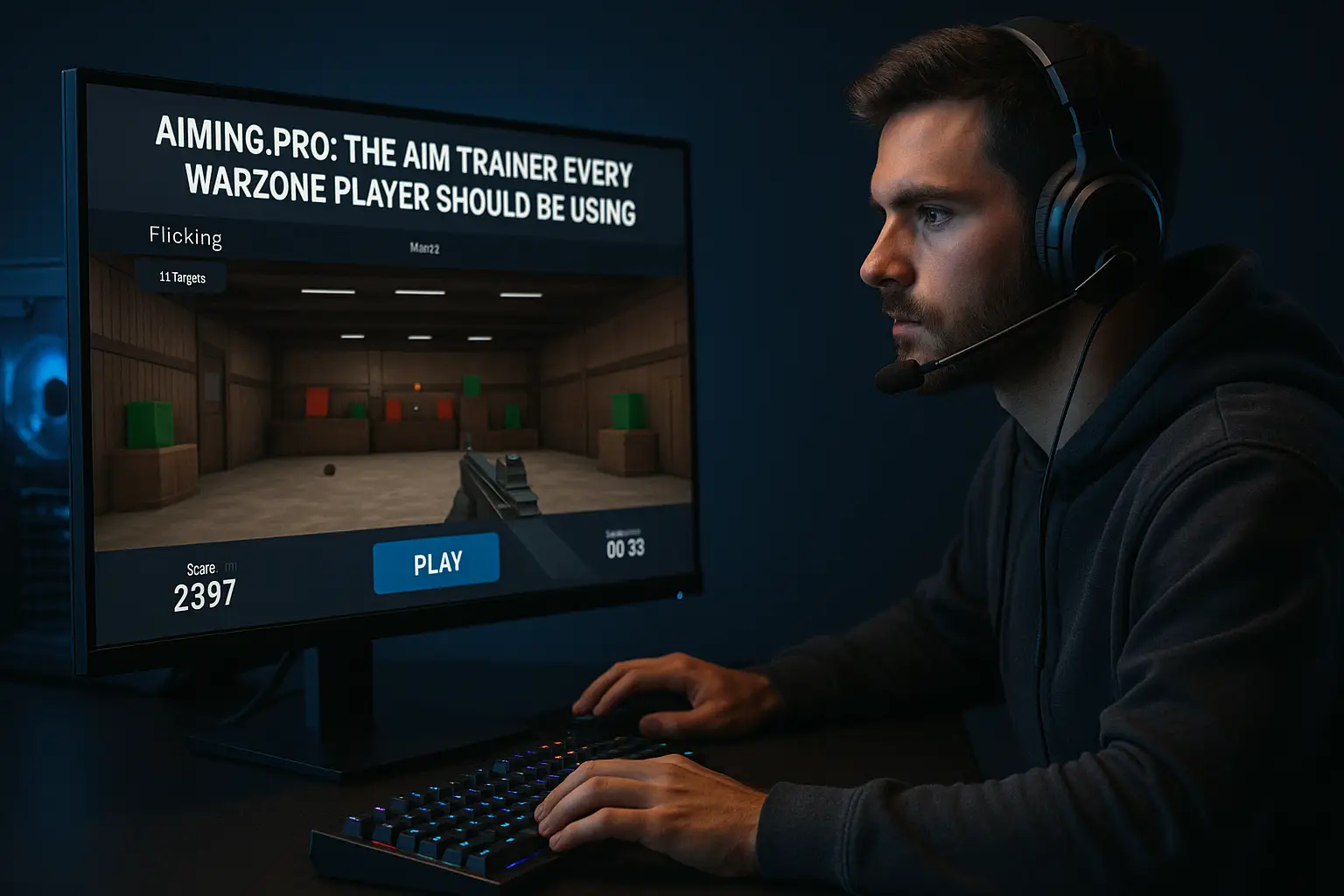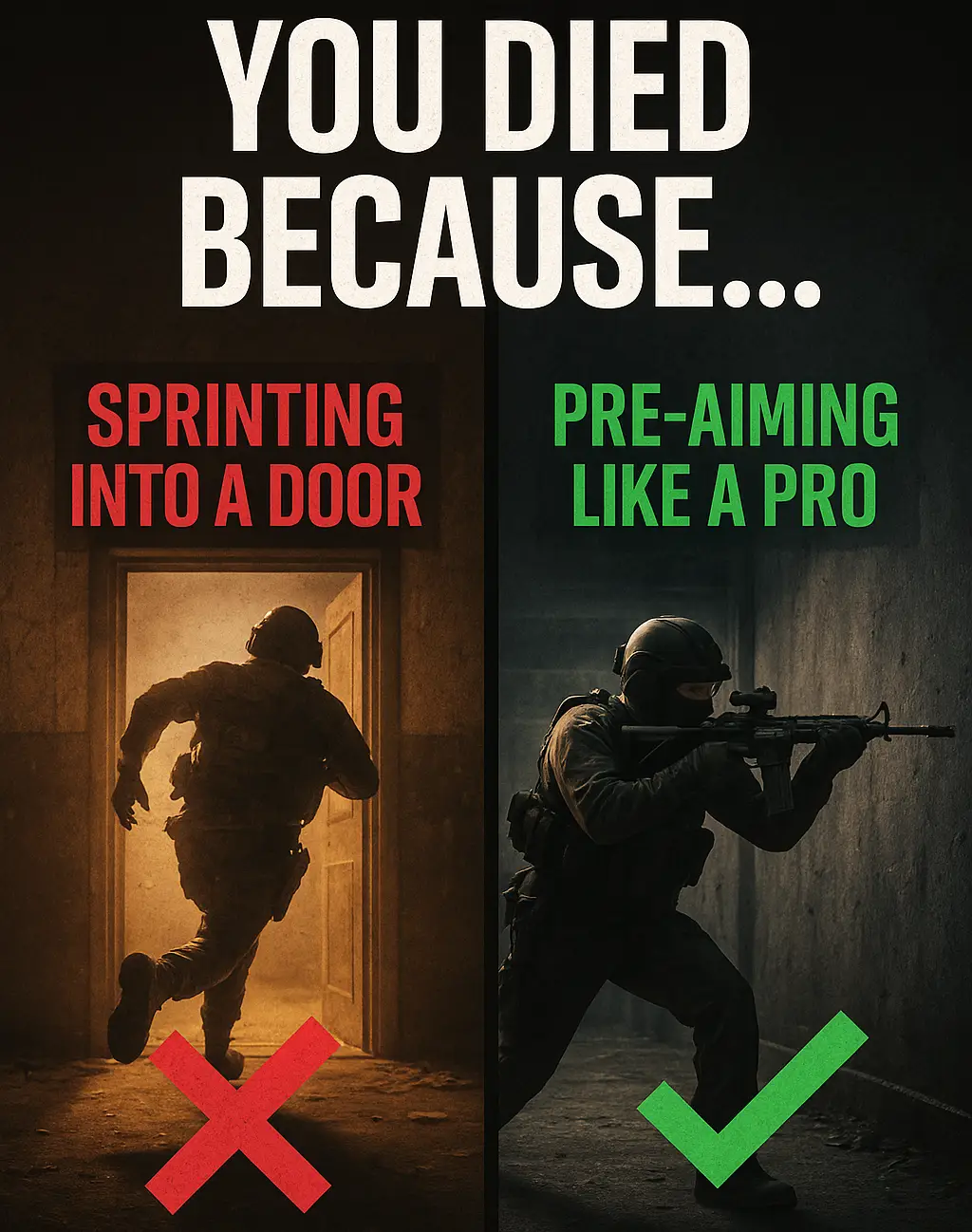
5 Tips to Master the Warzone COD Tactical Layout
Why Every Pro Player Uses the Tactical Layout in Warzone COD What Is the Tactical Layout and How Does It
In multiplayer FPS games, every player contributes to a team’s performance. Effective team dynamics mean that players trust one another and coordinate well during intense moments. I have seen how teamwork transforms chaotic matches into structured operations. Understanding your role and working with others to achieve common goals is key. When members know their responsibilities and communicate clearly, the team’s collective strength can overcome individual limitations.
Teams in FPS games come in many sizes, and the roles can vary significantly. Whether you are a sniper, assault specialist, or support player, knowing what each role contributes makes the game more rewarding. This clear division of labor allows players to adapt quickly to rapidly changing scenarios and ensures everyone brings something unique. Over time, teams that operate with open discussion and straightforward tactics can switch up their approach to tackle unexpected challenges within each match.
In addition, building a positive team environment means fostering mutual respect and understanding. Players who invest in getting to know one another tend to communicate more naturally, leading to smoother operations and more creative in-match strategies. Often, the most eye-catching gameplay emerges when players take time to plan and adjust during the match.
The first step to a successful multiplayer strategy is understanding team roles and building a simple communication system. Players should share information clearly and concisely.
In FPS games, details such as enemy positions, objective status, or map changes can turn the tide of a match. Clear verbal or text-based callouts help the team stay focused even when the battlefield becomes chaotic.
There are a few fundamental roles that commonly emerge in FPS teams:

Clarifying these roles at the beginning of a match leads to better cooperation and coordination. Teams that discuss tactics and plan maneuvers before time are more likely to adjust smoothly when unexpected situations occur. Constant communication and immediate feedback can help make split-second decisions during heated moments.
Before jumping into the action, setting up a system for in-game communication is essential. Not all players feel comfortable speaking on voice chat, but clear text communication works well.
I have noticed that teams benefit from standardized callouts for specific areas and events within the game, reducing potential confusion during intense confrontations.
Here are some steps to get more comfortable with team communication:
Following these steps helps players build a streamlined communication process that can lead to fewer mistakes and more coordinated plays during the heat of battle. The aim is always to ensure every team member is on the same page, even in the most chaotic moments.
Even when players are comfortable in their roles, the flow of a match can bring unexpected challenges. Anticipating these challenges and discussing solutions as a team is essential for sustained success.
I have observed that continual adjustments and constructive feedback among teammates have become a culture of improvement over time. This mindset pushes teams to refine their strategies and operations constantly.
Consider these factors that often contribute to successful team dynamics:
These factors are practical and can shape how a team reacts under pressure. Even minor communication and strategy improvements can dramatically boost overall performance when every player is synchronized in their efforts. Many teams have found that adopting a mindset of constant refining and open dialogue makes a significant difference in critical in-game situations.
Getting the right balance in a team means having players who naturally fit specific roles. In some matches, a heavy emphasis on offense can be more effective, while in others, adopting a defensive posture may be the winning strategy. It is key to experiment with different combinations and understand that optimal team composition can vary based on the game mode and the opponent’s tactics. This process of trial and error is both challenging and rewarding.
Matches are dynamic and full of surprises. The ability to quickly switch up tactics is something I have seen in many successful teams. Whether it means transitioning from an aggressive assault to a more cautious defensive hold or vice versa, being prepared for change is an essential part of strategic mastery in FPS games. Adaptability is not just about reacting to the enemy but also about anticipating their moves and planning.
A brief pause can allow teammates to regroup and rethink their strategies when things become chaotic. This approach does not necessarily slow the game, but helps teams maintain focus and clarity. A well-timed timeout can serve as a reset button, allowing one to correct mistakes and realign the team’s objectives.
After each match, it is essential to discuss what went well and what could be improved. This process of sharing constructive feedback helps everyone better understand their performance. Making an environment where team members feel comfortable offering insights and suggestions without fear of criticism lays the groundwork for long-term improvements and sustained success.
Every strategy session and post-match debrief serves as a valuable learning opportunity. Players who take the time to truly listen and understand feedback often find that their skills and teamwork level up faster than those who do not. Open dialogue can be the secret ingredient that transforms a good team into a truly exceptional one.
This section reminds us that while team dynamics challenges are common, a well-thought-out strategy and continuous attention to improvement can help players handle pressure and improve consistently over time.
Once essential team dynamics are in place, several advanced strategies can provide a competitive edge. I have seen these tactics work effectively in professional play and community-organized matches. The following tips help teams fine-tune their operations and turn coordinated efforts into decisive victories.
Master Map Control: Spend significant time learning the layout of each map. Understanding where key choke points exist and controlling critical areas can force the enemy into making mistakes. This approach opens up opportunities for surprising plays and can shift momentum in your favor.
Why This Tip Works: Knowing the map in detail allows teams to predict enemy movements and plan ambushes. It also provides a better feel for where support is needed most, reinforcing overall team strategy.
Practice Role-Specific Drills: Consider drills that concentrate on each role. Whether it involves perfecting sniping angles or refining rush techniques, these targeted exercises help players develop the precision required for real match scenarios.
Why This Tip Works: Focusing on individual role refinement ensures that every player can consistently perform under pressure, making the team more dependable during critical moments in the game.
Use of In-Game Tactical Devices: Many FPS games now offer a variety of tactical devices such as drones, radar scanners, or unique vision modes. Getting proficient with these tools can significantly change the course of a match.
Why This Tip Works: Tactical devices provide additional layers of situational information that can be used to catch opponents off guard or secure vulnerable areas, making them a powerful addition to any team’s arsenal.
These advanced strategies underscore that a deep understanding of game mechanics and coordination can separate a good team from a genuinely great one. Regular practice and experimentation with these approaches can dramatically improve teamwork and match outcomes.
While team dynamics are essential, the fundamentals of FPS game mechanics should never be overlooked. I often emphasize that even the most coordinated team can fail if its players do not understand the game’s core principles. A solid understanding of FPS games and their foundation and physics in gameplay is vital.
Key game mechanics that every player should focus on include:
A well-rounded player communicates and coordinates effectively and understands these core mechanics. This knowledge enables quick decision-making and adaptation to rapidly evolving in-game situations. In many cases, players who combine mechanical skills with strong team chemistry produce consistent and impressive results.
Investing time mastering these basics lays a foundation for more complex strategies and team tactics. The blend of technical proficiency and teamwork ultimately leads to success in competitive FPS gameplay.
Below are some common questions that players ask when they look to improve team dynamics in FPS games.
Question: How important is communication in multiplayer FPS games? Answer: Communication is essential. Clear and concise information sharing helps guide overall team strategy, allows for quick adjustments to enemy movements, and reduces confusion during critical moments.
Question: What role does teamwork play in winning matches? Answer: Winning often depends more on how well players work together than on individual skills. A coordinated team that understands its roles tends to execute complex strategies better and react more effectively under pressure.
Question: How can teams quickly adapt when the match goes off-plan? Answer: Teams can adapt by calling a quick timeout, reassigning roles, and discussing new strategies based on the current situation. Regular practice in dynamic scenarios builds confidence and helps the team improvise more effectively.
FPS games offer an exciting challenge where individual abilities combine with more extensive team strategies to create incredible, next-level gameplay moments. Through extensive gameplay, I have learned that true success comes from a blend of solid game mechanics, clear communication, and a well-organized team. Understanding these elements can significantly improve overall performance, whether you’re new to multiplayer FPS games or seeking to refine your skills.
The dynamic nature of multiplayer games requires continuous learning and adaptation. As teams evolve and the meta switches up, being open to feedback and adjusting strategies proves consistently beneficial. I encourage players to focus on the fundamentals and advanced tactics to fully tap into the potential of team dynamics. Experimenting and refining your approach can boost your overall experience and success in every match.
Finishing, every game represents an opportunity to learn and grow. The ideas detailed here are from practical experiences and countless matches where teamwork made all the difference. Embrace continuous improvement, communicate clearly, and work closely with your team to excel.
Beyond the basic strategies and advanced tips discussed above, it is worth spending extra time reflecting on the subtleties of team interaction. Many successful teams make it a habit to review each match by breaking down the successful tactics and the moments needing improvement. This process, which involves taking time to think on a play-by-play basis, builds individual skills and strengthens collective trust.
As players grow more comfortable with one another and learn to predict in-game movements, communication becomes almost second nature. Regular after-action reviews and light-hearted discussions outside formal debriefs can further cement these ideas, ensuring that every member knows the plan and feels motivated to contribute.
Mastering team dynamics is a continuous adventure that demands patience, persistent practice, and a willingness to adjust. By nurturing these interactions, teams can create a solid foundation that makes every match more engaging and successful.
Thanks for reading Multiplayer Madness: Navigating Team Dynamics in FPS Games. If you found it helpful, check out How to Optimize Your Internet Connection for Seamless Game Streaming.
Ask Questions: If you have any questions, leave them in the comments below.
Happy Gaming!

Why Every Pro Player Uses the Tactical Layout in Warzone COD What Is the Tactical Layout and How Does It

Best Aim Trainer for Warzone (Aiming.pro): Why Every Player Should Be Using It If you’re looking for the Best Aim

Warzone Sprint-to-Fire Delay Explained (Top 5 Secrets to Win More Fights in 2025) Field Brief: Understanding Warzone Sprint-to-Fire Delay “The